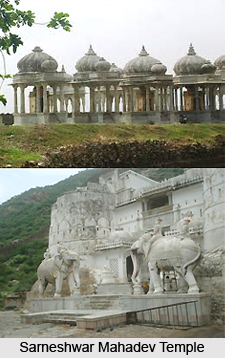 There are several places around Mount Abu that are famous tourist destinations, such as, Udaipur, Ajmer, Jaipur and others. However, while discussing particularly about excursion tours there are a handful of places where the tourists can drop in. Though few these are quite interesting and they are rooted into the resplendent history of Rajasthan. While Mount Abu was under the reign of the Chauhans its neighboring areas were also ruled by Rajput rulers. For instance Man Singh ruled the neighboring district of Jalore. There are several places, both big and small, that are worth checking out. Rented cars and other transportations are available in Mount Abu for visiting the places around it.
There are several places around Mount Abu that are famous tourist destinations, such as, Udaipur, Ajmer, Jaipur and others. However, while discussing particularly about excursion tours there are a handful of places where the tourists can drop in. Though few these are quite interesting and they are rooted into the resplendent history of Rajasthan. While Mount Abu was under the reign of the Chauhans its neighboring areas were also ruled by Rajput rulers. For instance Man Singh ruled the neighboring district of Jalore. There are several places, both big and small, that are worth checking out. Rented cars and other transportations are available in Mount Abu for visiting the places around it.
The places around Mount Abu include:-
Trevor`s Tank: Trevor`s tank is located at a distance of almost 5 kilometers from Mount Abu. It has been named after the British who constructed it. Since it is situated near the dense forest area one can easily come across colorful birds, such as, peacocks, partridges and pigeons.
Sirohi: A host of temples are situated in this city. Sarneshwar, Sarvadham, Ambeshwarji and Pavapuri Jain temples are scattered throughout the city. The architectural grandeur will definitely impress the visitors. These monuments reflect a blend of Mughal and Rajputana styles.
Jalore: This is probably the most important tourist destination around Mount Abu. There are forts and temples here that are definitely worth a visit. The Jain temples reflect their usual architectural splendor. There are Hindu temples too and most of these are dedicated to Lord Shiva. amongst these is the Sundha Mata Temple deserves special mention. It is dedicated to Goddess Chamunda.
Guru Shikhar: This is the highest peak in the Aravalli ranges. It is popular for its scenic beauty. It is situated at a distance of 15 kilometers from Mount Abu. A temple dedicated to Lord Vishnu is situated at the top of the mountain.
Mount Abu Wildlife Sanctuary: The sanctuary is well known for its flora and fauna. Tigers, hyenas, jungle cats and other animals are found here. safaris are available to tour the sanctuary.



















